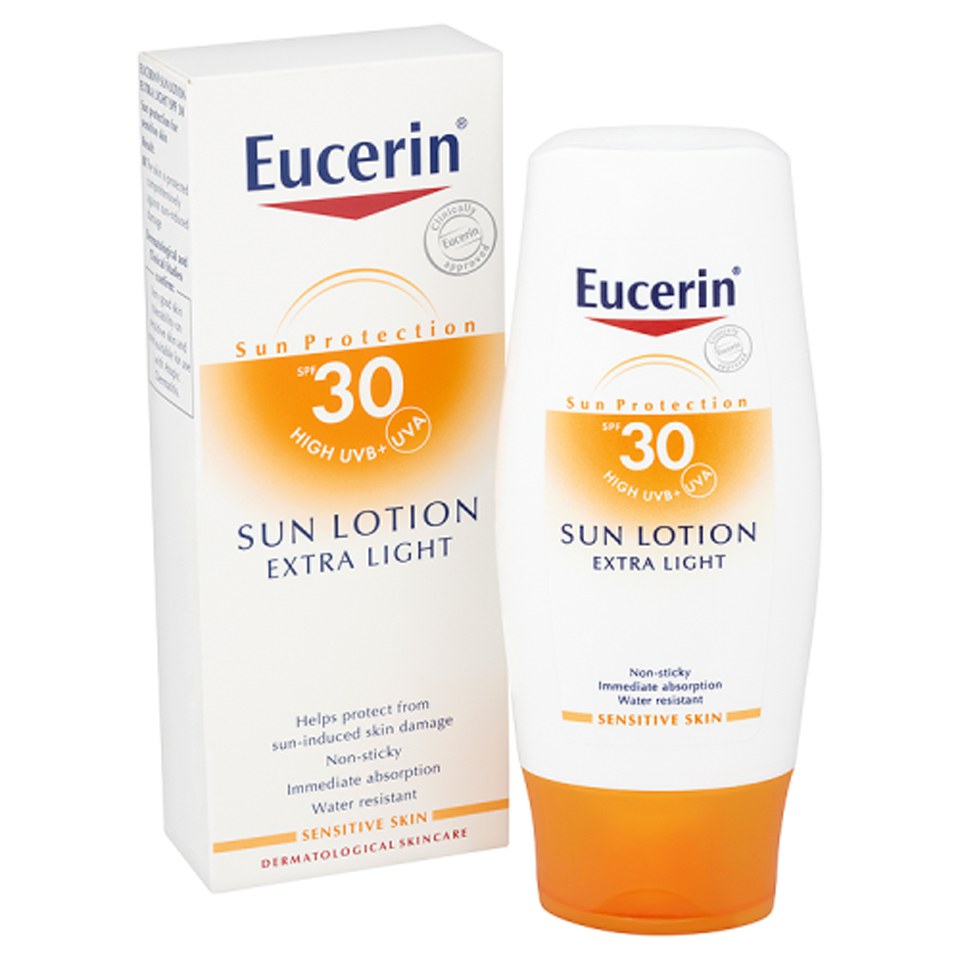

Still, if you're concerned there are options to avoid these compounds.Īlternatives include physical sunscreens, also called mineral sunscreens, made from zinc oxide and titanium dioxide, which can physically block UV light. And most dermatologists say the risk of sunburn likely far outweighs any potential risk from sunscreen chemicals. The agency says there's "inadequate data" to support a safety finding for some chemicals such as oxybenzone, but there's also no evidence of harm. Research shows some of the active ingredients used in chemical sunscreens are absorbed into the bloodstream, and the FDA has been conducting a safety review. 1 Concerned about chemicals? Try a mineral alternative So, we asked dermatologists to share their tips to optimize protection and we learned about the common misperceptions they hear from patients. Using sunscreen plays a "key role" in protecting your skin, according to the American Academy of Dermatology Association.
#Eucerin sunscreen spf 50 sensitive protect skin
In addition, millions of cases of basal cell and squamous cell carcinomas are diagnosed each year, and about 90% of these skin cancers are linked to ultraviolet (UV) radiation from the sun. are diagnosed with melanoma and more than 8,000 die from this type of skin cancer. Since the active compounds can degrade and lose their effectiveness, slathering on old lotion or spray is one mistake people make when trying to protect their skin.Įach year about 84,000 people in the U.S. If you find a bottle of sunscreen packed in last year's pool bag, here's a suggestion: Toss it out. It penetrates the skin less deeply than UVA but is the main responsibility for cellular DNA damage.Using sunscreen plays a key role in protecting skin from ultraviolet (UV) radiation from the sun. Short wave UVB (Ultraviolet B) rays, on the contrary, cause immediate visible damage to the skin, leading to what we usually refer to as sunburn. In addition, UVA rays may trigger polymorphic light eruption (PLE), the so-called sun allergy. They play a greater role in long-term sun damage and are a major cause of skin ageing and skin cancer. Long wave UVA (Ultraviolet A) rays emitted by the sun penetrate deeply into the skin and are the originating factor of oxidative stress in the skin.

What is the difference between UVA and UVB rays? The use of mineral filters is be advisable in case of intolerance towards chemical filters or for sun protection for babies and toddlers, whose skin is highly sensitive.

Both chemical and mineral filters are generally harmless and unobjectionable.

What is the difference between mineral and chemical UVA/UVB filters, and which one should I use?Ĭhemical filters absorb UV rays and transform UV rays into harmless innocuous warmth, whereas mineral filters remain on the surface of the skin and reflect and scatter UV rays that reach the surface of the skin. Cremes are specifically designed for normal to dry skin. For babies over 6 months try Eucerin Kids Micropigment Sun Lotion SPF 25.Įucerin Kids Micropigment Sun Lotion SPF 25įluids are designed for combination to oily skin as they have a non-greasy texture that does not leave an oily shine. For children over 1 year old try Eucerin Kids Sun Lotion SPF 50+ or Eucerin Kids Sun Spray SPF 50+. Is Eucerin Sun Fluid Mattifying SPF 50+ suitable for young children?Įucerin Sun Fluid Mattifying SPF 50+ was specifically developed for adult skin. Additionally we know that no sun protection product has a 100% protection. However, it is best to only stay in the sun for up to 60% of this time, and remember that skin damage can occur even before sunburn is visible. For example, a person who gets sunburnt after 30 minutes of sun exposure without sunscreen would not get sunburnt for 300 minutes using a sunscreen in high enough amounts with a sun protection factor of 30. A Sun Protection Factor (SPF) extends the time it takes for the skin to burn by a certain factor.


 0 kommentar(er)
0 kommentar(er)
